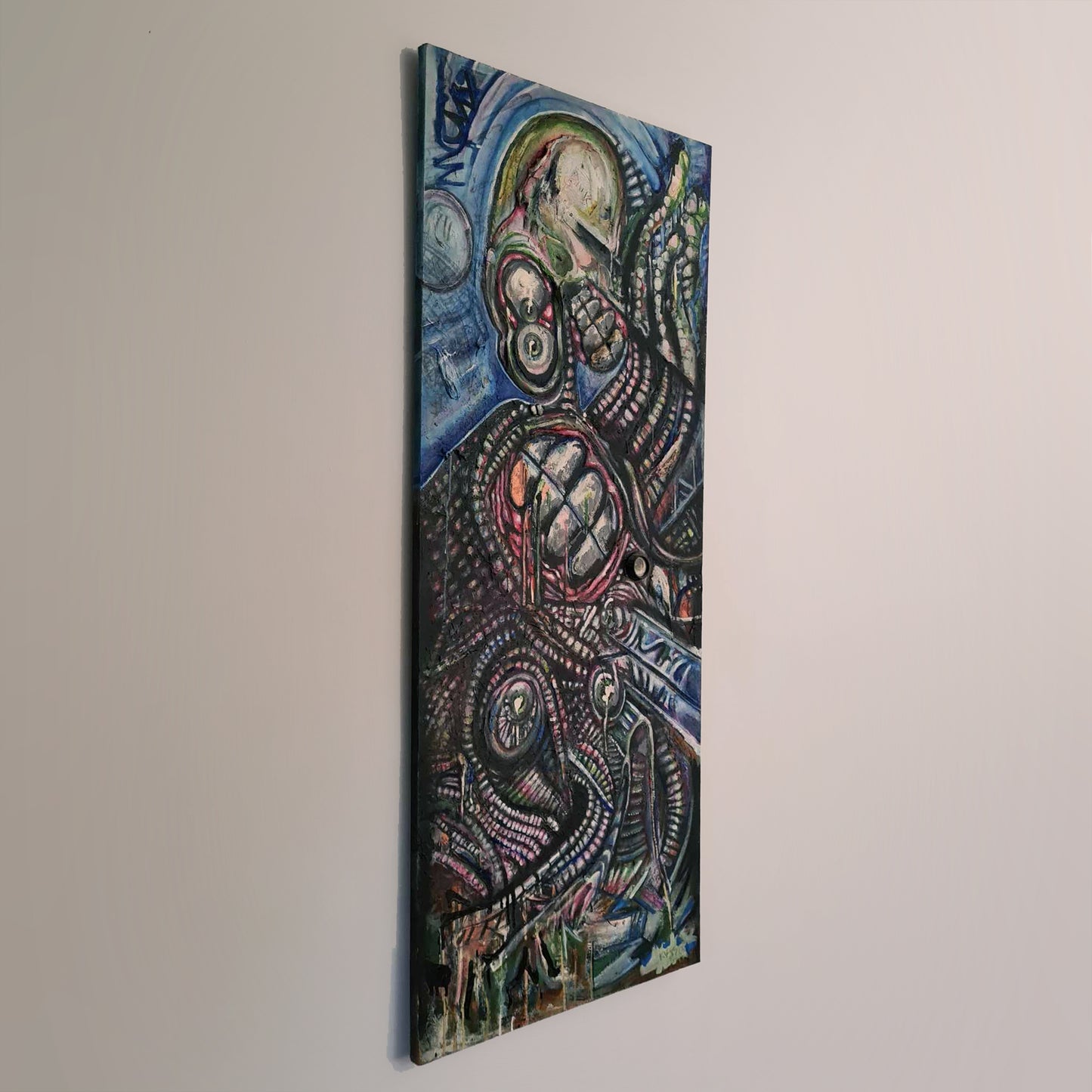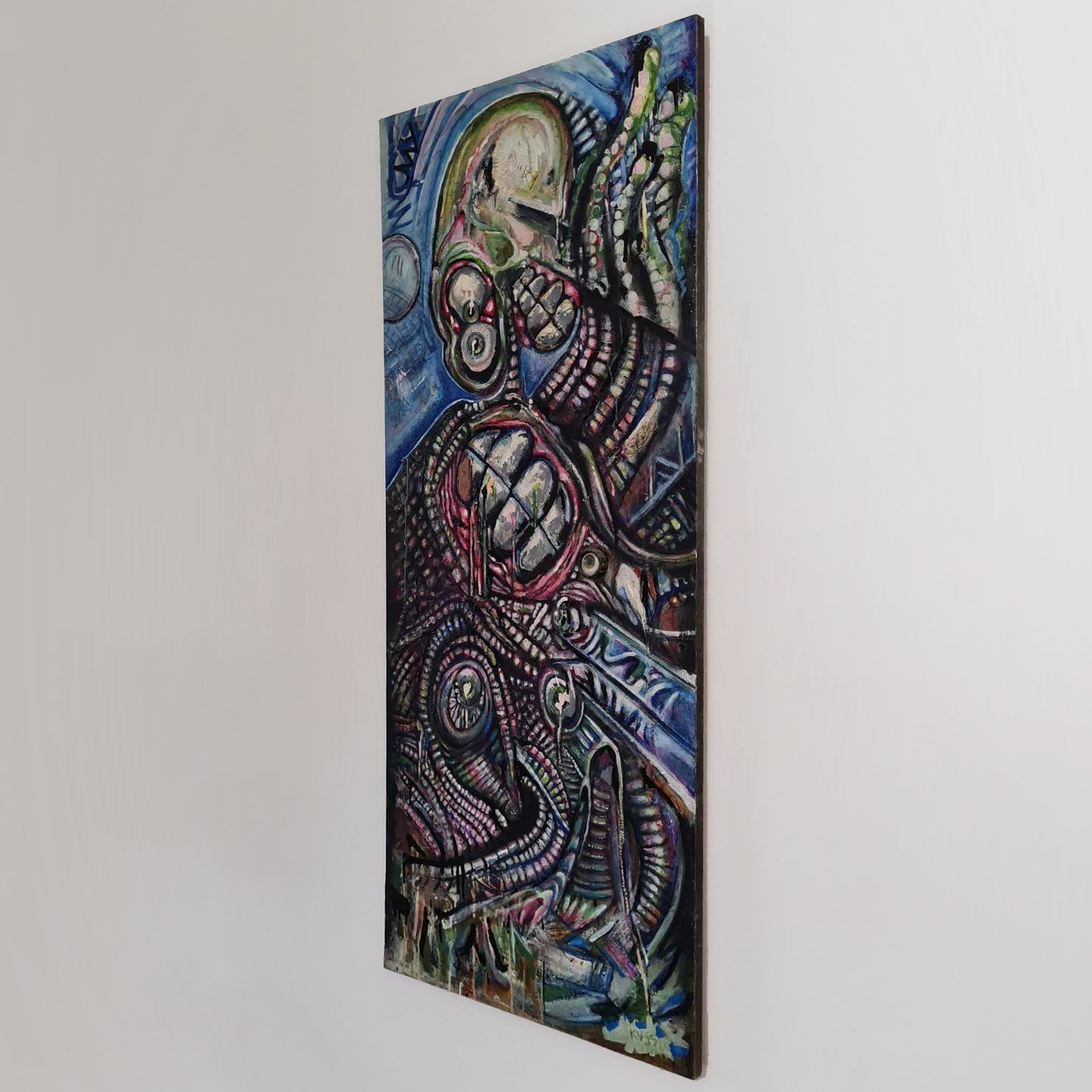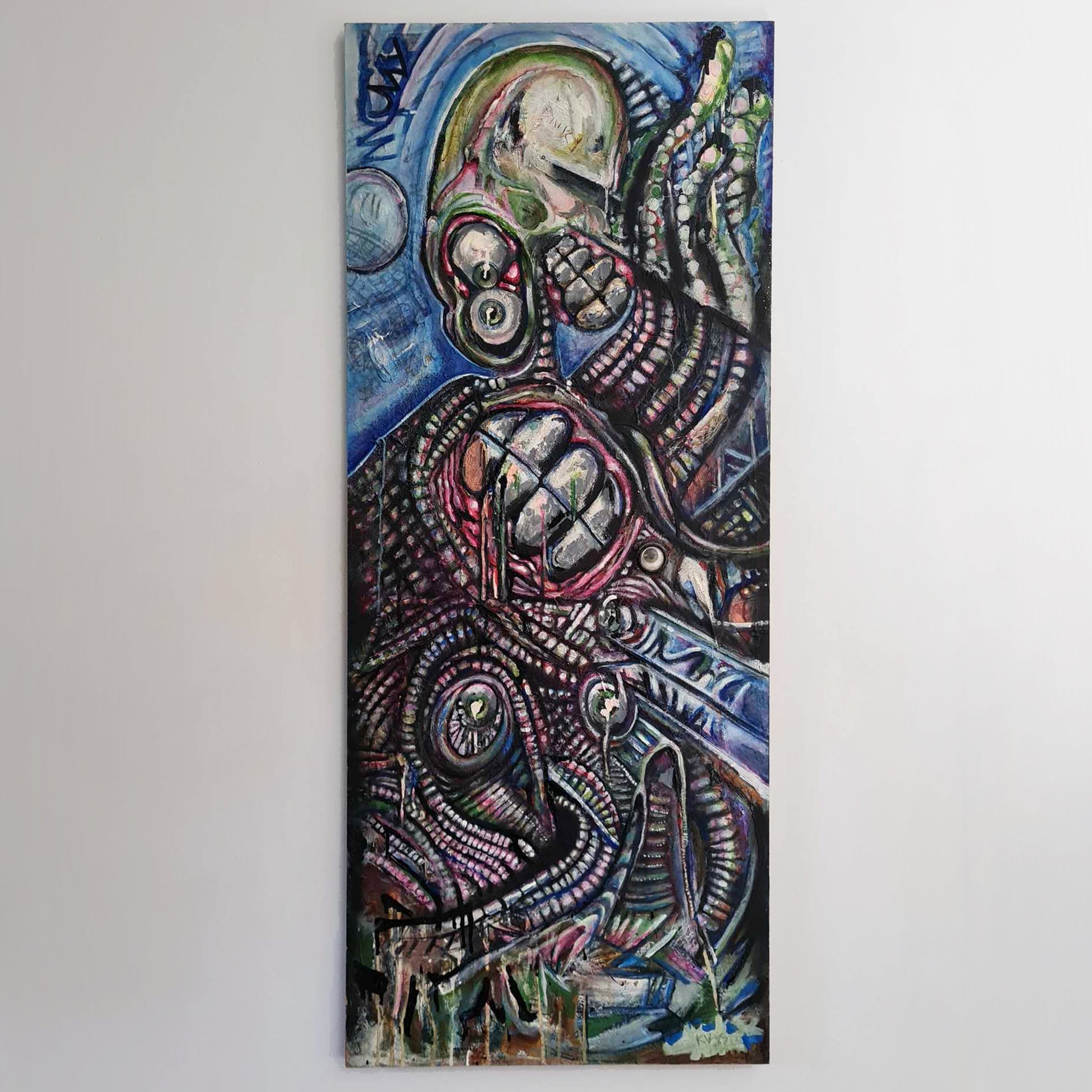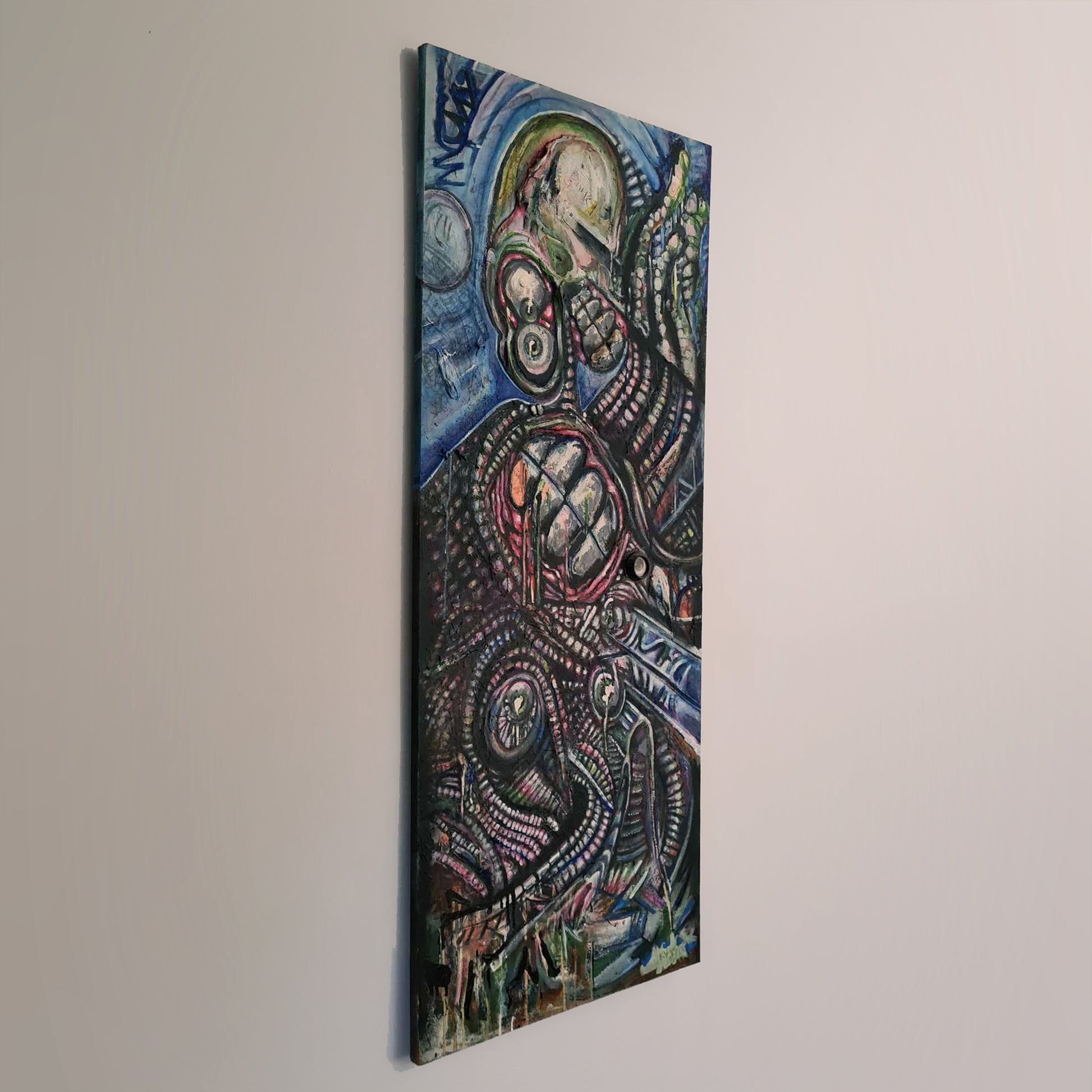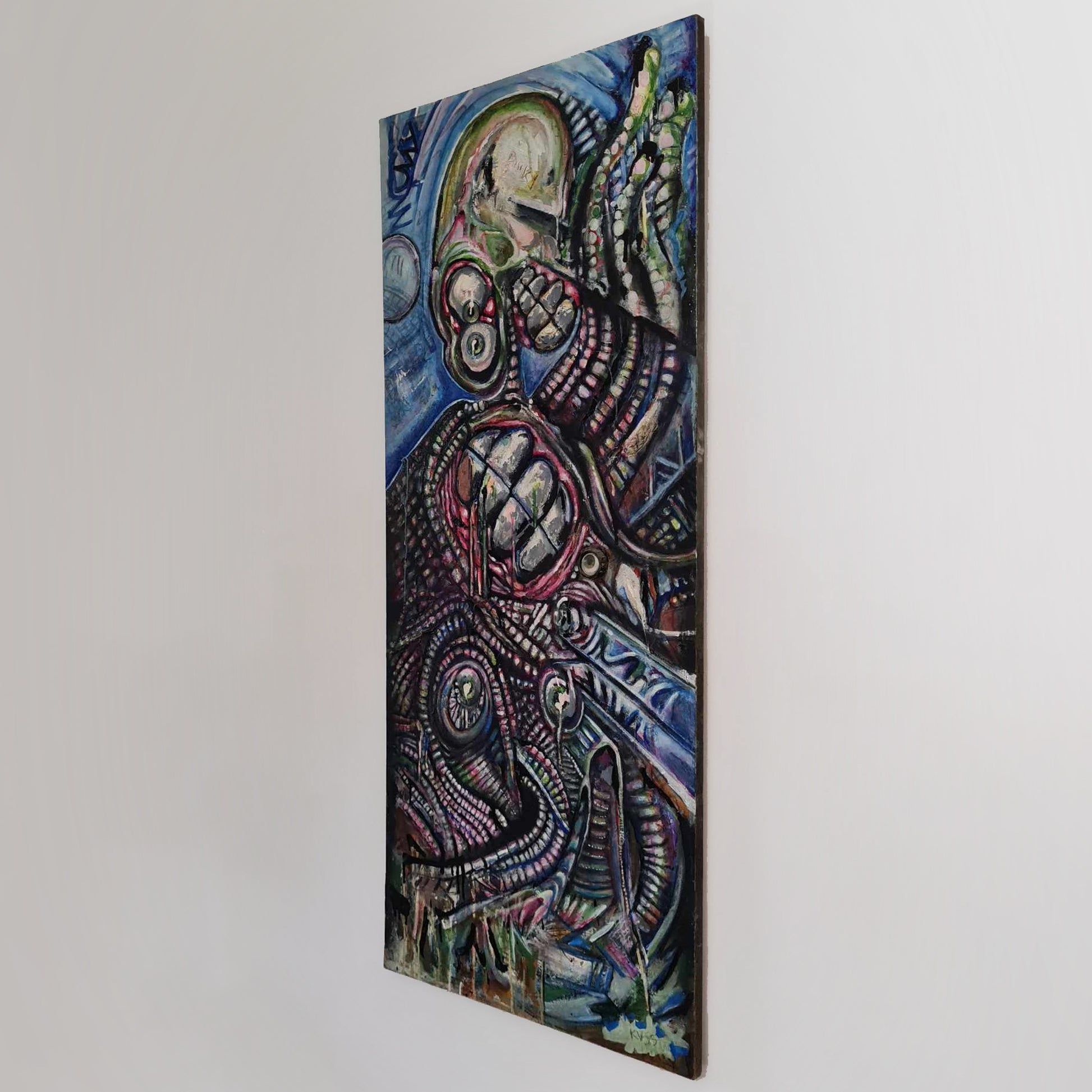KV55
KV55
Couldn't load pickup availability
TITLE: KV55
MEDIUM: Paint on reclaimed board & not only
SIZE: 145cm X 60cm
~
KV55 is a tomb in the Valley of the Kings in Egypt. It was discovered by Edward R. Ayrton in 1907 while he was working in the Valley for Theodore M. Davis. It has long been speculated, as well as much disputed, that the body found in this tomb was that of the famous king, Akhenaten, who moved the capital to Akhetaten (modern-day Amarna). The results of genetic and other scientific tests published in February 2010 have confirmed that the person buried there was both the son of Amenhotep III and the father of Tutankhamun. Furthermore, the study established that the age of this person at the time of his death was consistent with that of Akhenaten, thereby making it almost certain that it is Akhenaten’s body. However, a growing body of work soon began to appear to dispute the assessment of the age of the mummy and the identification of KV55 as Akhenaten.
The tomb is often referred to as the “Amarna cache”, given the mixed nature of its contents. It is presumed to be a royal cache and reburial dating from the late eighteenth dynasty, prepared after the abandonment of Amarna and the dismantling of the royal necropolis there. On the basis of the recovered artifacts, it is also suggested that the burial once contained more than a single occupant, either interred on one occasion or over a period of time. Queen Tiye is most often named in this context. It is also clear that the tomb was re-entered at a later time, almost certainly during the twentieth dynasty. At that time, any additional, hypothetical occupants of the tomb would have been removed and (possibly) relocated to KV35, while the remaining mummy and some of the other artefacts were desecrated and abandoned.
The tomb has a unique layout, with five curving corridors that lead to a rectangular burial chamber divided into upper and lower sections3. The lower section contains the sarcophagus of Akhenaten, which is made of quartzite and shaped like a cartouche3. The sarcophagus was damaged and its lid was removed in ancient times3. The mummy was also mutilated and its head was separated from its body3. The upper section contains a wooden shrine that was originally made for Tiye, but was later reused for Akhenaten. The shrine was also vandalized and its doors were broken off.
The tomb contained many funerary objects that indicate a relocation of the tomb’s occupants to the Theban valley from the Amarna Royal Wadi. Some of these objects are:
A gilded and inlaid wooden coffin that was originally made for a female, but was later altered for a male. The face and the cartouche containing the name of the coffin’s occupant were defaced in ancient times, suggesting that it belonged to Akhenaten.
Four canopic jars that were also made for a female, but were later inscribed with Akhenaten’s name. The jars contained human organs wrapped in linen and resin.
A gold foil face mask that was probably part of a funerary pectoral. The mask has almond-shaped eyes, a prominent nose, and full lips. It resembles Akhenaten’s distinctive facial features.
A gold diadem with two uraei (cobras) and two vultures. The diadem may have belonged to Tiye or Nefertiti.
A pair of gold sandals with toe stalls. The sandals have floral motifs and animal heads on their straps. They may have been worn by Tiye or Nefertiti.
A gold finger ring with a cartouche bearing the name of Akhenaten and an ankh symbol. The ring may have been a personal item of Akhenaten or a gift from him to someone else.
A silver finger ring with a cartouche bearing the name of Kiya, who was one of Akhenaten’s wives. The ring may have been a personal item of Kiya or a gift from Akhenaten to her.
A gold pendant with an image of Anubis, who was a god of mummification and the underworld. The pendant may have been used as an amulet for protection in the afterlife.
A faience cup with an inscription mentioning Akhenaten’s name and titles. The cup may have been used for ritual purposes or as a personal item.
A faience shabti (funerary figurine) with an inscription mentioning Tiye’s name and titles. The shabti may have been intended to serve Tiye in the afterlife.
A wooden box with a painted scene of Akhenaten and Nefertiti worshipping the sun disk Aten. The box may have contained some of the objects mentioned above or other items
Share

